Photo
album: "Egypt: Aswan"
Fly
over a photo with the mouse to enlarge it
Click
on a photo to open it in a new window
On
Thursday, April 4, 1975, in the evening, we board an overnight train to Aswan.
We arrive on the morning of Friday, April 5. A sandstorm has just risen and it
will not be possible to get to Abu Simbel either by plane or by boat. The
program of our stay in Aswan is thereby changed. After depositing our luggage at
the hotel, we go to see the great dam. Then we go to the island of Philae, where
the temple of Isis is being dismantled in order to be transferred to a higher
nearby island, out of the Nile's reach. We then go into an old granite quarry
where were carved obelisks. The next Saturday, April 5th, we visit the mausoleum
built in memory of Aga Khan III and the botanical garden on the island
Kitchener. In the evening we take an overnight train to Luxor.
 |
When we arrive in Aswan, we are
greeted by a sandstorm. These storms are becoming more and more frequent
since the High Dam has been put in service. The accumulation of the Nile
water, upstream of the dam, has created the lake Nasser. The very hot
temperature provokes a high amount of evaporation and this has caused a
major change in climate, no longer very dry. The other consequence for us
is that we cannot go as planned, to visit the temple of Abu Simbel. |
 |
The purpose of the High Aswan Dam
is to control flooding and generate electricity. This is one of the
largest dams in the world. Its construction lasted about 11 years with a
major participation of the Soviet Union. It covers much of the country's
electricity needs, with a total capacity of 2.1 gigawatts. But this
structure has also many negative aspects from an environmental point of
view: modification of the Nile Delta, heavy use of fertilizers to
compensate for the lack of silt brought by floods, development of
bilharzia in the many backwaters, salt rise in farmland, etc.
|
 |
We are now on the Nile between the
High Dam and the first Aswan Dam: this first dam, located south of the
city of Aswan, at the level of the first of the six cataracts of the Nile,
was funded by the British and inaugurated in 1902. Our boat is heading to
the island of Philae. |
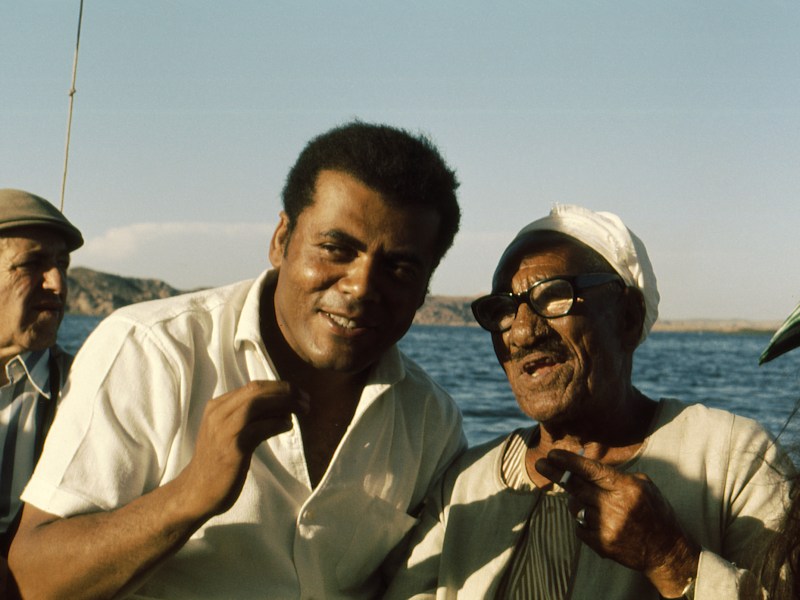 |
A young guide is joking with an
elderly guide. |
 |
The temple of Isis on the island
of Philae. Since 1902, the building of the first dam, the beautiful
temples on this island were partially submerged for several months of the
year. After the construction of the High Dam, Philae lies permanently
beneath the water level. |
 |
Another view of the Temple of Isis.
Since 1971, work has been undertaken to drain the island by surrounding it
with a dike and pumping water. When this work is finished, the temples
will be dismantled stone by stone and rebuilt on the neighboring island of
Aguilkia located above waters reach. The island of Aguilkia which was
remodeled to resemble Philae, will be later renamed Philae. |
 |
View from the island of Philae in
the direction of the High Dam. |
 |
We leave Philae. We can see the
temporary metal dike that protects the island and the pumps that keep it
dry. When the work is completed, within two years, the temples will again
be reflected in the waters of the Nile as they did for about 2300 years
and will have nothing to fear from its floods. |
 |
Rock on the banks of the Nile. |
 |
Near Aswan, we visit a granite
quarry in which we can see an unfinished obelisk. Its weight is estimated
at 1,200 tons. It has certainly been abandoned because of defects
encountered in the granite structure. |
 |
Side view of the obelisk showing
how the granite was dug to separate the obelisk from the rest of the
mountain. When one knows that the Egyptians did not possess tools of
steel, one can only marvel at this work. |
 |
Downstream of the first dam, we
cross the Nile on a felucca similar to those moored along the shore. |
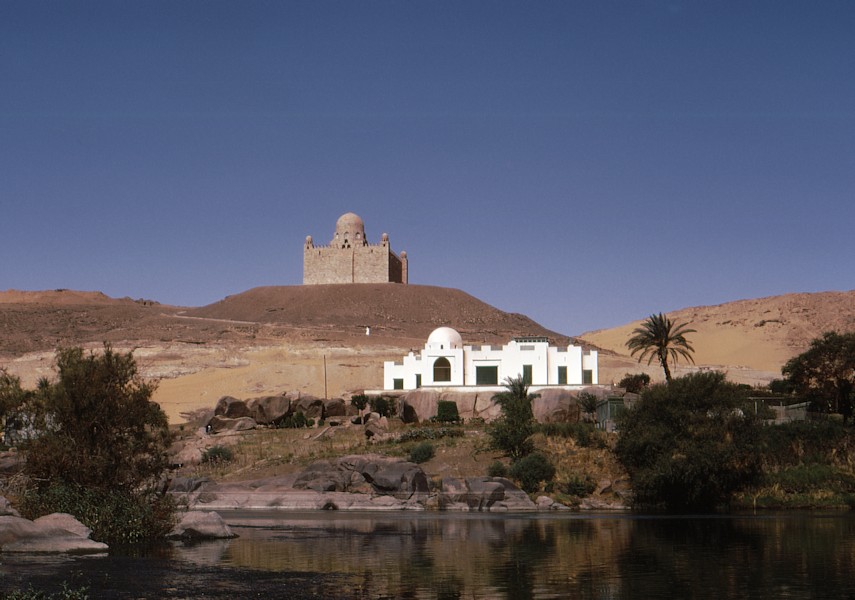 |
After the death of the Aga Khan
III, in 1969, according to his last wishes a tomb was built so that he
could rest on this land of Egypt where he liked to stay. Below, the villa
of his wife la Begum. |
 |
Inside the Mausoleum of Aga Khan
III.
|
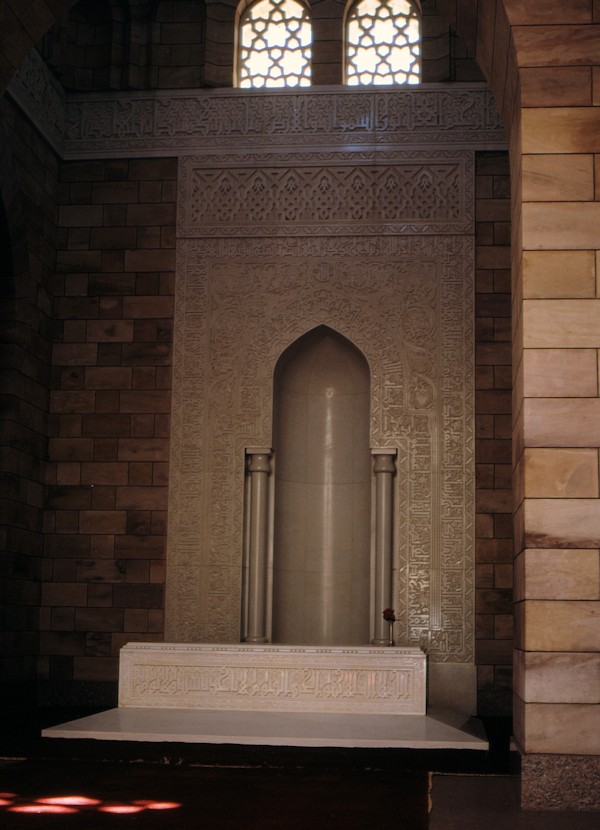 |
The marble tomb in which the Aga
Khan III rests. |
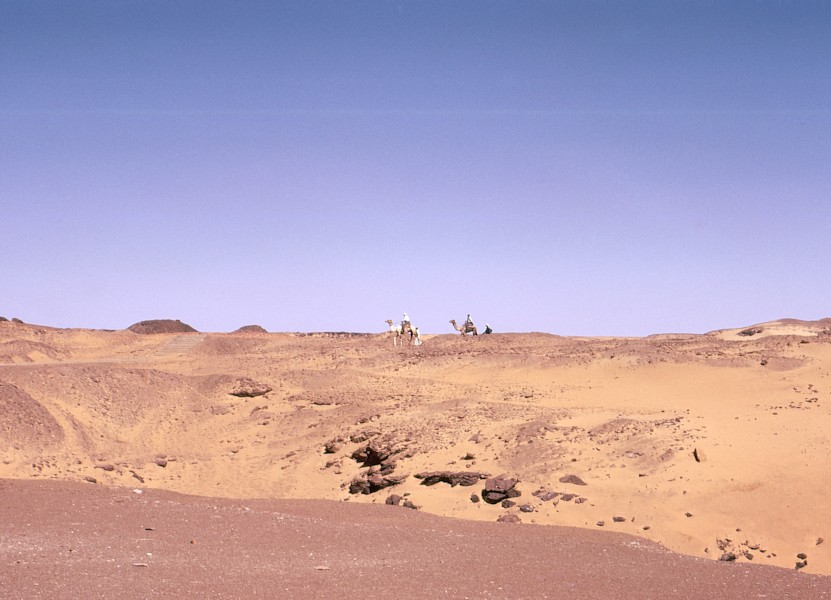 |
View of the desert from the back
of the Mausoleum. |
 |
View on Aswan from the Mausoleum. |
 |
We are now going to Kitchener
Island, converted into a botanical garden. |
 |
Flowering shrub on Kitchener
Island. |
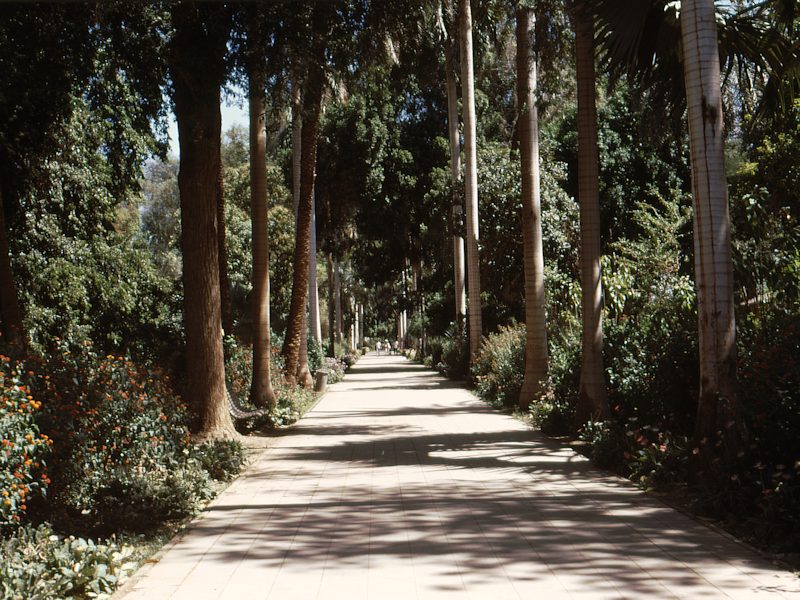 |
In a shaded alley on Kitchener
Island. |
 |
A walkway lined with flowering
shrubs. |
 |
On the way back to Aswan, we cross
a bark carrying palms. |
 |
View from the prow of our felucca. |
Go
back
.
.
.
.
.
.
.















